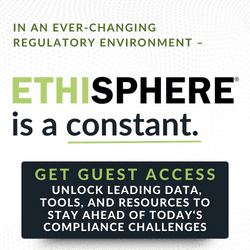Is Your Program Adaptive?
True Office Learning works with major corporations to provide detailed compliance insights through data analytics. Over the years, they’ve learned a lot about how employees learn and the benefits of creating adaptive learning environments. This kind of environment is key in knowledge acquisition and retention, and it can be highly helpful in compliance training.
Building a culture of compliance requires teaching people, at every level, how to make effective choices. People learn 10 percent of what they read, 30 percent of what they see, 50 percent of what they hear and see, 70 percent of what they say or write and 90 percent of what they do. So why are most organizations providing employees learning tools that only get them to about 50 percent efficacy when the stakes are so high?
It’s because most of us aren’t aware that technology can now achieve the most fundamental tenet of how humans are wired to learn: a learn-by-doing experience tailored to who you are and what you know. That, in a nutshell, is adaptive learning.
Research on effective adult instruction indicates that adults learn best when they feel respected and engaged in the learning process and when the content is relevant to them. Adaptive learning lets employees be masters of their own destinies, reducing fatigue and frustration while minimizing the loss of productive time and delivering better educational outcomes.
Just as we learn through contextual stories and play throughout childhood, adaptive learning personalizes content and situations by continuously monitoring the learners’ role and performance, accelerating learning for employees who quickly demonstrate mastery and offering more coaching and practice to employees who need it. Employees ultimately achieve proficiency in all the same topics; they just follow their own learning paths to get there. Here’s an example of how the user and back-end journey might look:

Adaptive Learning Improves Business Outcomes
Because learning paths are kinesthetic and require critical thinking and decision-making, adaptive learning can also yield high-quality insight into the risks facing the business with a granularity unavailable in simple pass/fail assessments. This behavioral intelligence helps you identify what drives employee choices and exactly where knowledge or application gaps exist.
Knowing your employees’ strengths and how they would act in real-life business situations empowers you to confidently tailor awareness programs to the organization’s needs and maximize resource and seat-time utilization while arming you with quantitative data to measure and prove effectiveness.
Implementing an Adaptive Learning Approach
To decide whether adaptive learning could improve your compliance program, ask yourself these five basic questions about the learning tools you offer within your organization:
- Are they teaching people by “doing” instead of “reading and seeing”?
- Are they optimizing seat time and personalizing learning paths for every employee?
- Are they generating indicative data about employee choices that impact my organization?
- Can I measure effectiveness and benchmark performance internally and against industry peers?
- Are they arming me with a clear way to prove that each learner obtains proficiency?
If you answered “No” to any of the above, it may be time to re-evaluate your compliance resources to assess if a learn-by-doing approach could fit your organization’s business goals.



 Neha Gupta is Chief Executive Officer at
Neha Gupta is Chief Executive Officer at 







